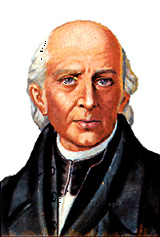
|  |  |  News Around the Republic of Mexico News Around the Republic of Mexico  
Mexico to Dust Off and Examine War Hero Bones
 Miguel Angel Gutierrez – Reuters Miguel Angel Gutierrez – Reuters
go to original
May 22, 2010


| | Miguel Hidalgo |  |
Mexico City – Mexico is dusting off urns containing skulls and bones of the country's Independence War heroes to try to confirm their identities decades after the remains were stored in a Mexico City monument.

Soldiers will remove the urns from a mausoleum within the monument on May 30 and carry them through the Mexican capital in a procession before handing the bones over to forensic anthropologists.

Historians have long questioned the listed identities of eight Independence War fighters whose remains were locked away along with those of the war's most famous hero, Miguel Hidalgo and three other decorated heroes.

As Mexico celebrates the bicentennial of its independence from Spain, the government has agreed to let anthropologists examine the bones so they can be properly labelled, briefly put on display to the public, and returned to the mausoleum.

Fed up with Spain dumping its financial burdens on Mexico, including its use of the colony to cover its debts from a war with Napoleonic France, Mexicans began a revolt that turned into a bloody 11-year struggle for independence.

The remains of 12 fighters named as war heroes - Hidalgo among them - were quickly buried in poorly constructed tombs in Mexico City's giant Metropolitan Cathedral in 1823.

HEADS HUNG OFF HOOKS

Decades later, following Mexico's 1910-20 Revolution, the bones were moved to the towering Angel of Independence monument that commemorates Mexico's liberation from Spanish colonial rule and have remained there ever since.

"We are simply going to determine who they really are," historian Jose Manuel Villalpando told Reuters. "We know the remains were truly in a mess when they were found in the cathedral."

Hidalgo famously rallied Mexicans to topple Spanish colonial rule in his "Cry of Dolores" call to arms in the village of Dolores in September 1810, igniting the 11-year independence struggle.

The skulls of Hidalgo and three other independence leaders are entombed in the monument, their identities confirmed.

The four men were captured and beheaded in 1811 by Spanish forces who put their severed heads in steel cages, hung them off hooks on four corners of a granary in Guanajuato and left them there for 10 years as a warning to other fighters.

Specialists from Mexico's National Institute of Anthropology and History plan to compare the bones with historical records on the heroes' heights and bullet wounds to confirm the identities of the other eight men.

"This is something pending in our history," said Villalpando, who is coordinating ceremonies for the bicentennial of the War of Independence and 100th anniversary of the Mexican Revolution.

The remains will be displayed in the National Palace, the official seat of the Mexican government, from August for a year before they are returned to the Angel of Independence with correctly labelled plaques.
|

 |
|  |



